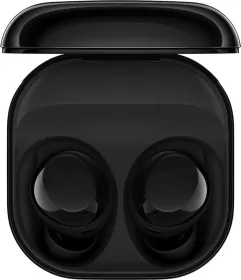In a market flooded with mediocre options, finding good-sounding earbuds in the ₹5,000 segment can be quite a challenge. The Sony WF-C510 aims to fill this gap by delivering an impressive audio experience without stretching your budget. These are the most affordable earbuds that you can buy from Sony.
However, as with any product, there are drawbacks to consider. While the WF-C510 offers notable strengths, it may also fall short in certain areas. In this detailed review, we’ll explore the performance of these earbuds to see if they truly live up to the expectations. Let’s get started.
Sony WF-C510 TWS Price & Availability
The Sony WF-C510 TWS is priced at ₹4,990. It is available in three colorways—White, Blue, Black and Yellow. You can buy them via Amazon, Croma, Flipkart, Sony India’s website, or nearby retail stores. There’s a ₹1,000 introductory discount on these earbuds till October 31, which brings down the price to ₹3,990.
Pros
- Good sound quality
- Rich and clear female vocals
- Customizable 5-band EQ
- Dual connection
- Comfortable fit & lightweight
- Good controls
- Quick charging
- User-friendly app
Cons
- No hi-res codec support (only AAC/SBC)
- No ANC
- Average microphone performance in noisy environments
- Playback controls are not fully customizable
- Average battery life
Sony WF-C510 Review: Sound
The 6 mm drivers in these earbuds produce a pleasant sound. The sub-bass is noticeable, but not overpowering—definitely not for bass heads. The mids are good, too. However, if you find it lacking and want to boost it using the EQ, then don’t. It makes the mids lose their clarity, and that’s why I wouldn’t recommend messing with it too much.
Female vocals sounded rich and clear, though every now and then, they could get a bit too loud or “shouty.” It didn’t happen often, but enough to notice. Still, most of the time, they sounded crisp and beautiful.
If you like your highs to be clear, you’ll appreciate the WF-C510. They’re sharp but not harsh. The treble was slightly sharp in the higher mids, but it tapered off smoothly before becoming too much.
There is only AAC/SBC support, though. These earbuds do not support hi-res LDAC or LHDC codecs, whether you are using an Android or an iPhone.
DSEE
Sony’s DSEE (Digital Sound Enhancement Engine) technology is meant to improve the quality of compressed music. Personally, I noticed a very slight difference. If you’re streaming from services like Apple Music, the impact is minimal. Still, it’s a nice touch if you have an ear for these things.
Soundstage and Imaging
The soundstage is decent for the price. While it may not be as expansive as that of high-end models, it’s good enough for casual listening. Similarly, the imaging is also in the decent category.
Custom EQ
One of the good things about these earbuds is the 5-band EQ. You can adjust frequencies at 400 Hz, 1K, 2.5K, 6.3K, and 16K. If you’re someone who enjoys tweaking your sound, you’ll love this feature.
There are also EQ presets like Bright, Mellow, Vocals, Bass Boost, and more, which are, well, okay—they do what they say. Keep in mind that there is some loss of resolution when playing with the EQ.


Sony also includes a “Find Your Equalizer” feature if you are not an EQ expert. It plays music and lets you choose between different sound profiles to create a custom EQ. Honestly, it didn’t work that well for me, but it’s there if you want to give it a try.
You also get Sony’s “Analyze Ear Shape” feature, which adjusts the sound based on your ear’s shape. This is useful if you want to enjoy the 360 Audio feature. Otherwise, I didn’t find it making a whole lot of difference to the listening experience.
Sony WF-C510: Connectivity
The WF-C510 supports Bluetooth 5.3. I had no connectivity issues with these earbuds. Even when I selected the Prioritize Sound Quality option, I had a stable connection throughout. The AAC codec is generally solid for wireless connections, and I didn’t notice any dropouts during my use. It supports Google Fast Pair also.
Dual Connection


One of my favorite features of the Sony WF-C510 is the dual connection. It works flawlessly every time, making it super easy to switch between two devices. All you have to do is put both earbuds in the case, press and hold the button for 5 seconds until the light flashes blue, and then—it’s in pairing mode. You can then connect to another device.
What’s even better is that you can manage this directly from the app. You can pair multiple devices at once and switch between two simultaneously. I found this feature really convenient, especially when juggling between my phone and laptop. It’s just one of those things that works, and it works well.
Sony WF-C510: Design and Build
In terms of design, these come in a rectangular-oval shape that’s small and fits in your pocket easily without making a huge bulge. I have the Yellow variant, but you can choose from three other colors—Black, White, and Blue. Each earbud has left and right markings for easy identification.
On the front of the case, there’s an LED indicator, while the back has a USB-C charging port and a pairing button. Up top, you’ve got the Sony logo, and the case can be opened with one hand—as long as you’re facing the charging port towards you.
However, getting the earbuds out and into your ears with one hand is a bit tricky. I’ve tried it, and honestly, it’s kind of a juggling act—you’ll likely drop them in doing so.
The Sony WF-C510 earbuds come with an IPX4 rating, meaning they can handle splashes of water and sweat. The charging case lacks any water or dust resistance, though.
On the bright side, the design is super lightweight. The case weighs approximately 31 grams, and each earbud is just 4.6 grams (including the ear tips). That makes it easy to carry around without feeling bulky.
Sony WF-C510: Fit
I’ve been using the Sony WF-C510, and I have to say—they’re very comfortable, at least for my ears. No weird pressure or discomfort, even during long listening sessions at moderate volume levels. The earbuds have a stemless in-ear design, which gives them a sleek and minimal look. They fit snugly without causing any irritation.
Sony WF-C510: Sony Sound Control App
The WF-C510 uses the Sony Sound Connect app. You can sign in with your Sony account to sync data and check battery percentages for both the earbuds and the charging case. It also shows if your earbuds are connected to DSEE and the Bluetooth codec (AAC) on the homepage.
The app allows you to analyze your ear shape to optimize sound, access 360° audio (though it requires a separate app installation), and choose between 2 playback control presets. You can also view and manage connected devices.



The user interface is clean and intuitive, featuring smooth animations when the earbuds connect. Overall, my experience with the app has been positive; it’s user-friendly, and I haven’t encountered any major issues.
Sony WF-C510: Playback Controls
The Sony WF-C510 feature physical buttons on each earbud. On the Sony Sound Connect app, you can choose between two control presets: ambient sound control and playback controls. You cannot have both, at least that’s what I understand.
The playback controls are simple: a single press plays or pauses music, 2 presses skip to the next song, 3 take you to the previous song, and a long press activates the voice assistant. You can slo adjust the volume by repeated presses on the left earbud, lowering the volume and the right earbud increasing it. They work perfectly fine.


However, the controls aren’t fully customizable, which is a downside. I hope Sony addresses this in a future software update. That aside, there’s voice feedback when you press the buttons, which I don’t think is necessary, so I am glad I can turn it off/lower its volume.
Sony WF-C510: Noise Cancellation and Ambient Mode
There’s no active noise cancellation or ANC on these earbuds. But since this forms a seal, there’s a decent amount of passive noise cancellation that works decently for blocking out mid to high frequencies like chatter. However, it doesn’t do much for other frequencies and isn’t as good as ANC. I would’ve liked ANC on these but it is what it is.
Ambient Mode
The ambient mode lets in external sounds, but it can affect the overall sound quality. I mostly kept it off because I noticed the audio wasn’t as good when it was on. It does a decent job at letting in external sounds if you are wondering.
Sony WF-C510: Microphones and Calling
The microphones on the Sony WF-C510 deliver decent performance in quiet environments, just like any other TWS. However, they struggle in loud settings, like busy streets, where noise rejection becomes an issue.
During calls in quiet places, the sound quality is okay, but background noise can hinder conversations and make the calling experience an awkward “Can you hear me?” thing. Overall, the mics are really not good.
Sony WF-C510: Battery and Charging
In my experience, the battery life on the Sony WF-C510 earbuds is pretty decent. Over the span of 4 days, I used them for about 4 to 5 hours a day (AAC, DSEE on, Ambient Mode off), totaling around 18 to 20 hours of playback—pretty close to Sony’s claimed 22 hours with the case.
Sony claims you can get 11 hours of playback on a single charge with Ambient Sound Mode (ASM) off, and while I didn’t push it that far, my real-world usage was decent. If you are expecting some insane battery life from these TWS, it’s not for you.
As for the charging, you can fully charge the case in about 1 hour 45 minutes. Even better, just 5 minutes of charging gives you around 1 hour of playback, which is very convenient if you’re in a hurry. It charges via the USB-C port at the rear.
Review Verdict: Should You Buy the Sony WF-C510?
Smartprix Rating: 8/10
Sound: 8.5/10
Design and Build: 8/10
Connectivity: 9/10
Fit: 9/10
App: 9/10
Playback Controls: 8/10
Passive Noise Cancellation: 7/10
Microphones: 5/10
Battery and Charging: 7/10
The Sony WF-C510 delivers a solid audio experience, with rich mids, balanced lows, and plenty of EQ options for the price. However, the average microphones and lack of ANC make it feel like Sony could have done a bit better. Nonetheless, if you’re not looking to spend too much, but still want quality sound, these are one of the best TWS that you can get.
First reviewed in October 2024.
You can follow Smartprix on Twitter, Facebook, Instagram, and Google News. Visit smartprix.com for the latest tech and auto news, reviews, and guides.












































